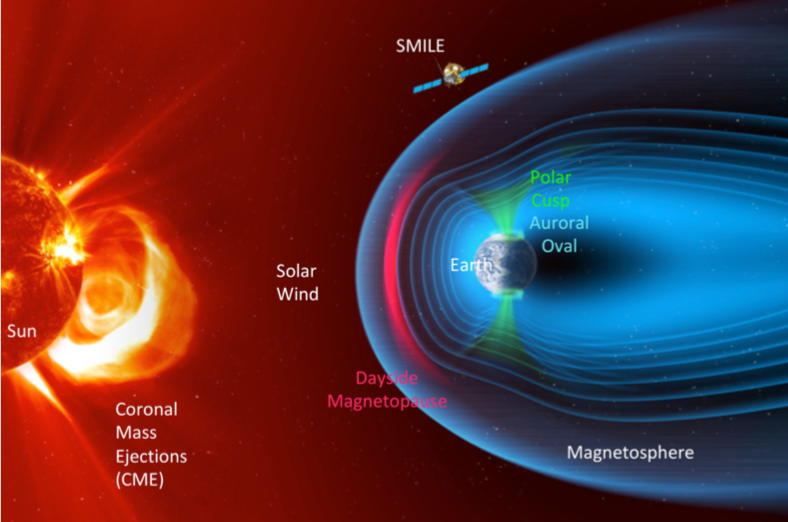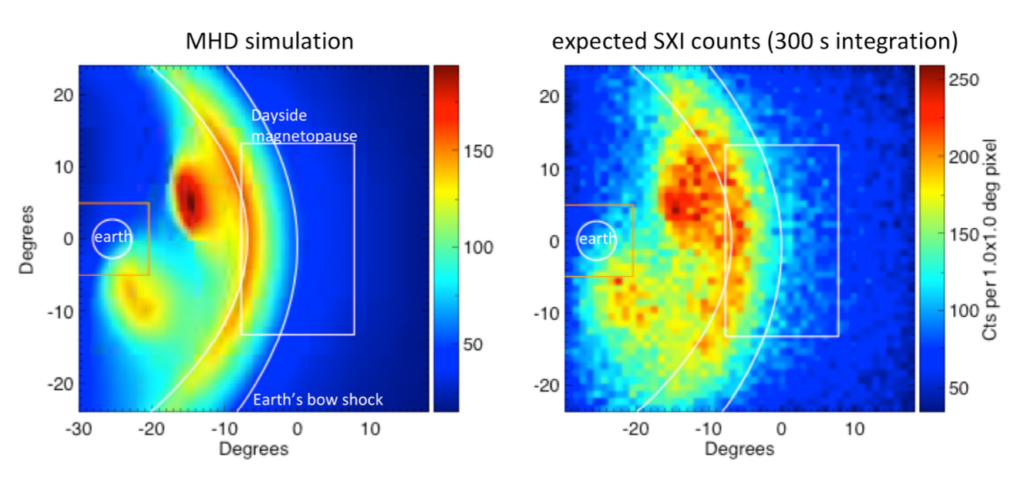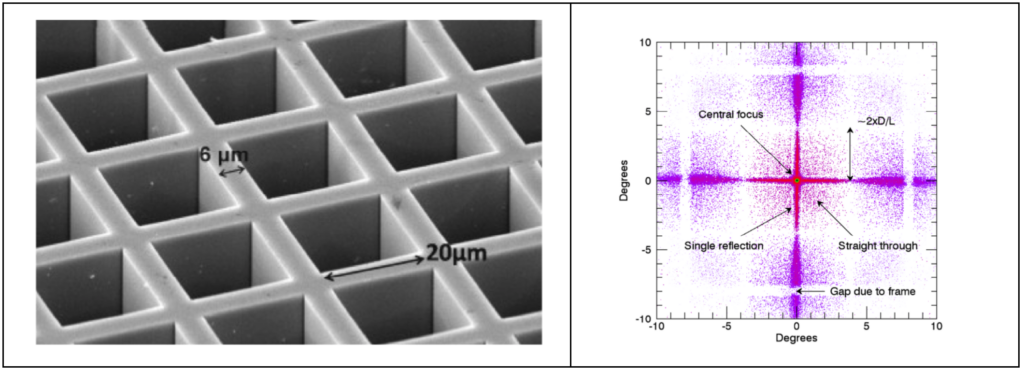X-ray image processing software for SMILE data
MSE | Research projects in the MRU Computer Science
Introduction
The SMILE (Solar wind Magnetosphere Ionosphere Link Explorer) mission is a joint mission between the European Space Agency (ESA) and the Chinese Academy of Sciences (CAS). As illustratedin Figure 1, SMILEwill take images and movies oftheEarthmagnetospherefrom outside, thusrevealing theglobal picture of thesolar wind’sinteraction with the magnetosphere. With these global and time-dependent images, SMILE will revolutionize magnetospheric physics.

Figure 1: Schematic view of the Sun-Earth system with the SMILE spacecraft shown outside the magnetosphere (blue). From its vantage point, SMILE will gather simultaneous images and video of the dayside magnetopause (where Earth’s magnetosphere meets the solar wind – indicated in pink), the polar cusps (a region in each hemisphere where particles from the solar wind have direct access to Earth’s ionosphere – indicated in green), and the auroral oval (the region around each geomagnetic pole where auroras most often occur, light blue circles over the Earth polar region
SXI will image X-rays produced by heavy ions (e.g. carbon, nitrogen, oxygen etc.) within the solar wind as they collide with neutral particles in the Earth’s exosphere (a process called solar wind charge exchange). SXI will image the flow of the solar wind around Earth as illustrated in Figure 2.

Figure 2: MHD (left panel: Source T. Sun, NSSC, China) and expected SXI image seen in X-rays (right panel; Source: University of Leicester).
While individual images with a very limited field of view have been taken before with ESA’s XMM-Newton or the Japanese Suzaku mission, SXI will provide for the first time true global imaging of the solar wind charge exchange region within the magnetosphere. To achieve such a large field of view (26.5 x 15.5 degrees), SXI uses a mirror constructed from an array of micropore optic, also known as microchannel plate optics. Each pore acts as a focusing optics telescope (Wolter geometry). While a single pore only covers a small field-of-view, as an ensemble, the millions of pores cover the uniquely large field-of-view required for imaging the magnetosphere. To achieve this large field-of-view, the point-spread-function of SXI is necessarily compromised with significant contribution in the wings, as shown in Figure 3.
Your work: X-ray Image Processing Software (IPS)
FHNW has an extensive background in imaging reconstruction and enhancement through the RHESSI and STIX projects. You will contribute in improving SXI imaging quality by applying computational techniques similar as those used for STIX. To fully exploit the scientific potential of SXI, you will develop imaging processing software to enhance the dynamic range of the observed SXI images during data analysis on ground, especially since the strength of the primary science target (the foreground emission from the magnetosheath) can be comparable to the background when the solar wind strength is relatively low.

Figure 3: (Left panel) micrograph of a typical MCO showing the square channel pores. (Right panel) Simulation of an SXI point spread function. (Source: Univ. of Leicester, UK)
Project Plan
In the first project (7th semester project, or P7), you will get familiar with indirect imaging techniques and inversion problems in general. You will make your first RHESSI, than STIX images based on real and simulated data
In the second project (P8), you will work with the SXI team to learn specificities of its imaging algorithms and will make your first attempts for handling the complex image reconstruction of SXI.
In the third project, which will be your master thesis, you will develop and publish your own imaging technique for SXI imaging.
Type of study
[x] Ful time
[x] Part time 50% with assistant position at i4Ds
Advisors
Prof. Dr. André Csillaghy & Prof. Dr Säm Krucker
More to explore
Wolter Telescope: https://en.wikipedia.org/wiki/Wolter_telescope
RHESSI: https://hesperia.gsfc.nasa.gov/
STIX : https://astro-helio.ch/project/stix/
SMILE: http://sci.esa.int/smile/